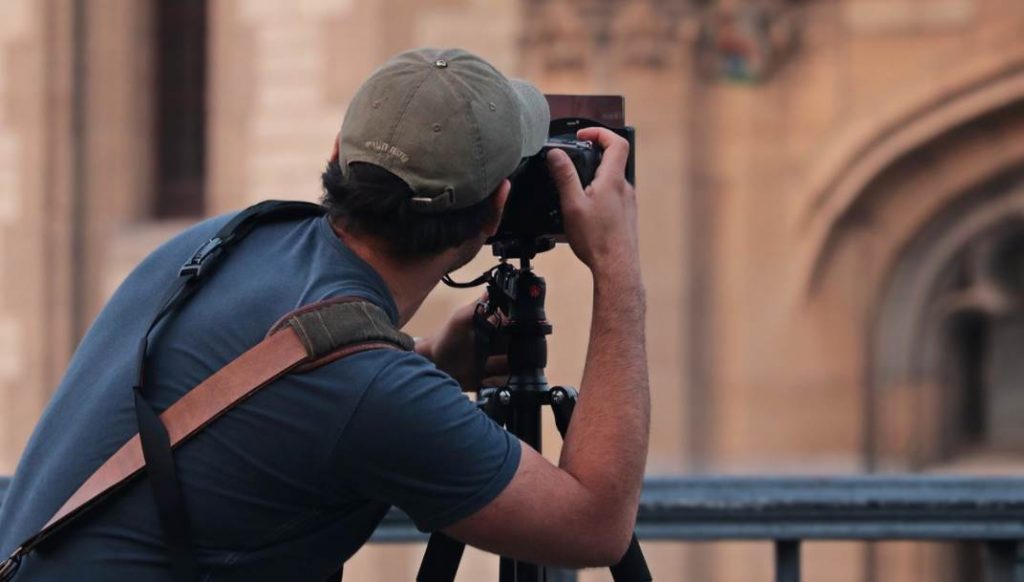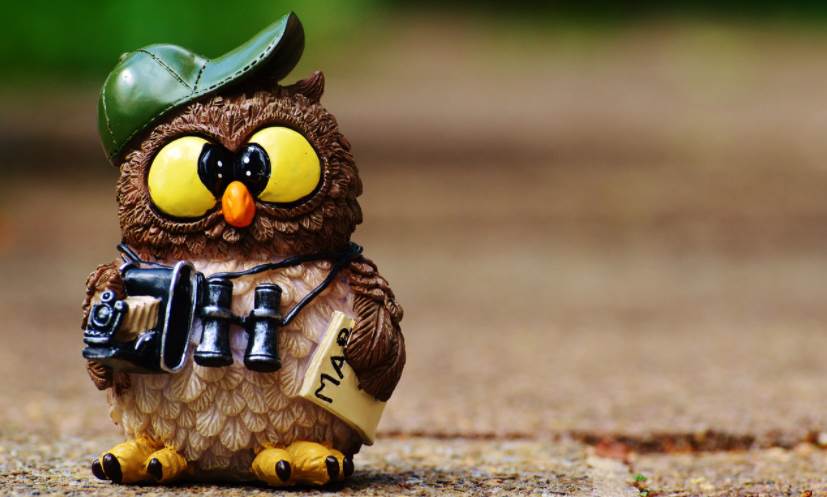
If you have just gotten into photography, it is safe to say that you may know about what spot metering is. Or it could be the opposite.
I still remember the first time I got a professional camera, and spot metering confused the life out of me. I let it on default, but after reading more about it, I finally figured out why it is so useful.
So, what is spot metering? Well, it is a way of measuring the light that gets reflected from a person’s face.
I know it might not sound like something that is for everyone but it does work well if you are looking to get the full experience.
Now, as far as spot metering is concerned, you will find several types. But that is not all, we are also going to teach you how you can use to use spot metering.
Therefore, let’s not waste time and have a look.
What Is Spot Metering?
Have you ever found yourself in a situation where you were about to take a great looking portrait but you ended up with a silhouette? Now, I am not calling out the photographers who specialize in taking such photos, most of the time, you do that by mistake.

That is because scenes that have a lot of contrast are confusing for your camera, to begin with. This could often result in images that are badly exposed and have no sense of symmetry.
Thankfully, you can overcome this issue by looking at different available metering modes.
This is only going to help you to get the proper experience. But what is spot metering, to begin with? What is what we are going to explore.
When you are taking a photo, the camera can measure light in so many ways.
Metering modes essentially let you measure the light in specific areas of the frame. You can choose the entire area or a small area in the frame.
DSLRs and mirrorless cameras let you manually change the metering modes and spot metering only uses the dot that is in the center, which means that only 5 percent of the frame.
How Do You Use Spot Metering?
Now that you know what spot metering is, the next part is more about just how you can use spot metering.
There are several ways through which that can be possible, and it is not that difficult to understand, to be honest. The process itself is really easy.
Once you have selected the spot metering mode, you just have to press the shutter button and your device will measure the light and change the exposure for you.
All the metering modes work in most shooting modes, but they don’t work in Auto and Program modes.
However, using the manual mode will disable automatic metering simply because metering modes serve as automatic functions in the camera.
Therefore, if you truly want to use a proper metering mode, you will have to be in automatic mode. However, I have used cameras that let you bypass this and use metering mode in manual mode.
If you are taking photos in high contrast, you should use spot metering as it will only measure the light in the smallest details, and your photos will look out coming excellent.
Most photographers, including myself, use spot metering by default in the majority of settings.
Metering Modes: Everything You Need To Know!
It is also important to understand several metering modes are available by default in a camera, and understanding each is going to allow you to take the shots you want to take with ease.
1- Spot Metering
Spot metering works a lot like partial metering. In this type of metering, the camera uses only a dot in the center, which serves as less than 5 percent of the frame, but this allows the camera to measure the light in very minor details and is excellent for almost all conditions.

2- Center-Weighted Average
The center-weight average is a metering technique in which you set the area where you would like the light measurement to take place, and the camera would only measure the light in that specific area.
This works a lot like spot metering or partial metering but still is excellent for all the users who want to have a bit more control over the way their photos are looking like.

3- Average Metering
While average metering was a big thing back in the past, it has been largely replaced by other metering types, more commonly centered-weighted average metering.
Average metering works by taking the light from the entire scene and then creates an average for the final exposure setting. This mode does not give any weighting to a particular area of the photo.
Which could result in looking at an odd-looking scene, but is not used a lot commonly.
4- Partial (Selective) Metering)
As the name suggests, the partial or selecting metering mode is going to allow the camera sensor to collect data from a small circular area that is on the center of the frame and manages to cover 10 to 15 percent of the entire scene, ultimately collecting more data, and measuring more light. If the scene is not as full of contrast, using this metering mode is a good idea.

5- Multi-Zone Metering
This type is also called matrix, evaluative, honeycomb, or segment metering. This metering mode allows the camera to measure light in several areas of the frame and then combines the results to determine the best setting for the exposure.

This is the default metering mode on a lot of cameras that are available on the market, and people don’t bother changing it either because it works so well.
6- Highlight-Weighted Metering
This is another uncommon metering mode that is normally found in camera sensors that have a higher resolution.
It is essentially used to reduce the clipping by analyzing each area for washed-out highlights or underexposed shadows.
It does have similarities with the matrix or evaluative metering, it is exclusivity to higher resolution sensors is the reason why this is not used more often in standard cameras that we see in the market.
Which Metering Mode Is The Best?
If you are just starting with photography, you are going to realize that there are going to be a lot of metering modes that will be available and choosing the right one is something that happens to be a lot more important than one might think.
For starters, if you end up with the wrong metering mode, you might not be able to take the photos that you want to take, the way you want to take them.
The best metering mode is evaluative metering as it manages to evaluate the scene with ease, and that results in excellent-looking photos, to say the least.
Changing the metering mode might indeed allow you to take photos that look better, but in such situations, you will have to start working towards experimenting with several metering modes, and therefore, things can be more difficult.
In most cases, the metering mode also depends on the scene that you are photographing, and that is why evaluative metering is so good because it can just adapt itself to almost all the scenes, which result in the perfect photo being taken every single time.
Does Spot Metering Work In Manual Mode?
A lot of the times, people ask me if they can use spot metering or another sort of metering in manual mode.
This is sort of a tricky question because you see, metering on its own happens automatically, which means that in theory, it should not work in manual mode.

However, most cameras do allow you to use all the metering modes in manual mode, as well. In addition to that, these metering modes also work in aperture and shutter priority modes.
But if you do want full control over how you are taking the photos, it is better that you use these metering modes in manual mode.
That way, you will be able to adjust the ISO, shutter speed, as well as everything else independently, and you will not be making any other impacts on the other functionalities of your camera.
With that said, using spot metering or any other type of metering in manual mode is the way to go as it lets you take photos the way you want to take them and there are not going to be any discrepancies that might come in the way.
Spot Metering Tips
When you are talking about using spot metering, you might want some tips because after all, if you are just starting, it might not be an easy task for you to get started with the photos that you are taking.
With that said, spot metering, just like the other metering modes, is not that hard, to begin with. You can get started right away when you know what you are looking at.

For now, we want to talk more about the tips.
Most professional photographers use spot metering in tandem with the Auto Exposure Lock (AEL or AE-Lock) doing this lets them select the area for exposure measurement, lock the exposure, and then recompose the image before they go ahead and take the shot.
However, my time taking photos and learning to do so has also taught me that you can experiment to an extent with spot metering as well.
The key here is to learn as much as possible about this metering type by taking shots that are done in different settings.
That way, you will at least know what to do and where to begin.
Frequently Asked Questions (FAQs)
Q1- What metering mode should I use?
Answer: This depends on the type of pictures you are trying to take, to be honest, More often than not, the metering mode that is set as default by your camera is the best one. However, you should still experiment around to find the best one.
Q2- What is spot metering in DSLR?
Answer: Spot metering, as the name suggests is a metering mode in DSLRs and mirrorless camera systems, and it measures the light based on where the dot is spotted. There are other metering modes available too, but spot metering happens to be one of the most common ones.
Q3- Is Spot Metering best for portraits?
Answer: If you are taking portraits in an area that has a lot of contrast going on, taking portraits using spot metering can help that as the light will not be measured in such intense detail.
However, if you want perfect results, do try and play around with metering modes.
Q4- When should I use spot metering?
Answer: The spot metering is one of the finest options and can be used in pretty much any shooting condition. However, if you are being specific, then spot metering is based used in incredibly high contrast areas.
However, if you are not sure, you can also rely on evaluative metering to see if the results are similar.
Q5- Can you use spot metering in manual mode?
Answer: While older cameras did not support spot metering or any other metering mode in manual mode, manual cameras allow you to use whatever metering mode you want to use without any issues and it works well, too.
With that said, you should not have any issue using these metering modes in manual camera mode.
Wrap-Up:
I can understand just how overwhelming the metering modes can be, to begin with.
That is why most of the times, you are spending time figuring out which mode you should be using and which mode you should be avoiding.
Thankfully, mastering metering modes is not something that is going to be difficult at all. If you know what you are doing and where you should be starting, finding the right metering mode is only a matter of moments.
With this article, we wanted to be sure that anyone who is getting into photography has an easier time understanding metering modes, and there are no discrepancies that are coming your way.
Rest assured, the more you practice, the better it would be.
Spot metering is great, but you need to know that it is not the only metering mode.
Different scenes require different metering modes, and while you can use one metering mode for all the pictures, you might have to adjust other camera settings in the process.